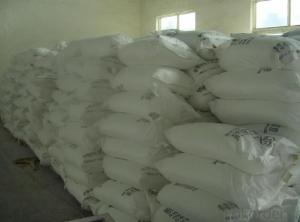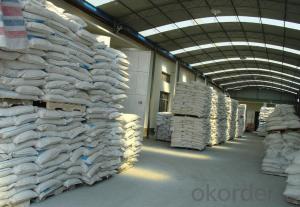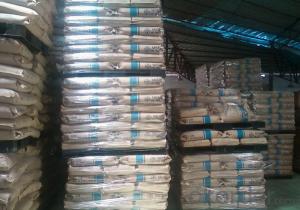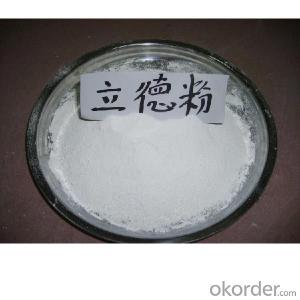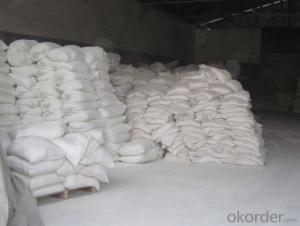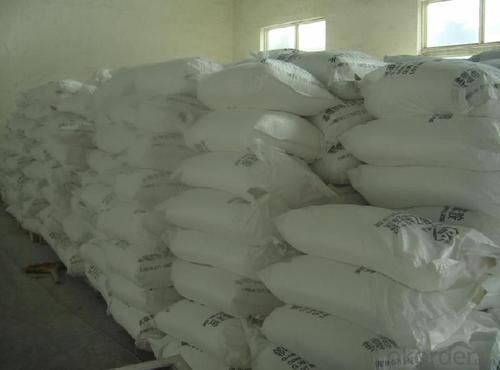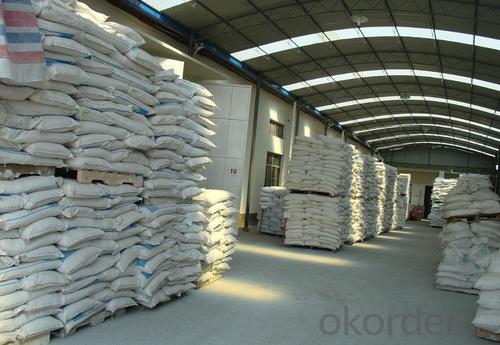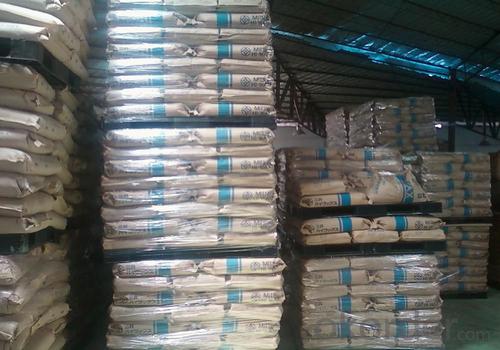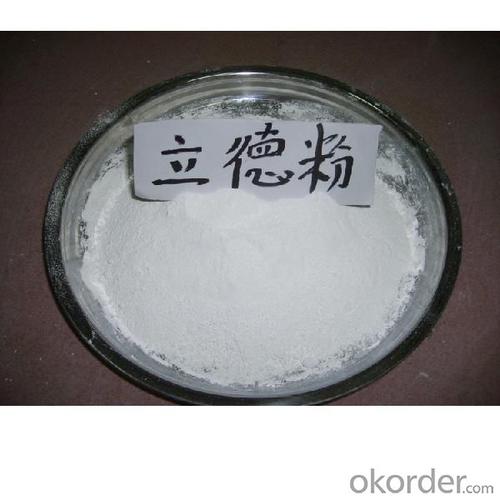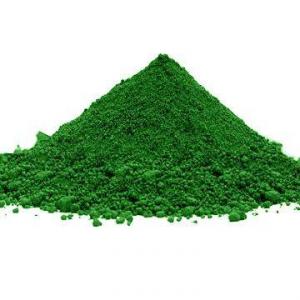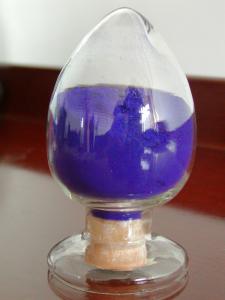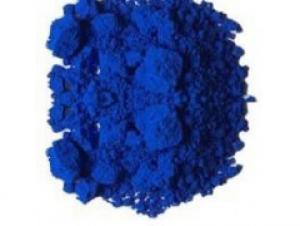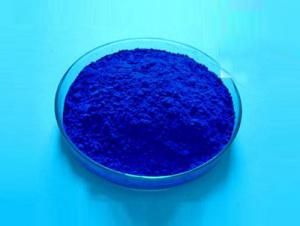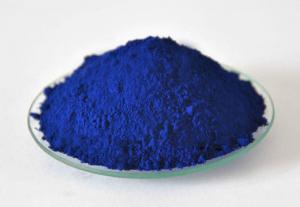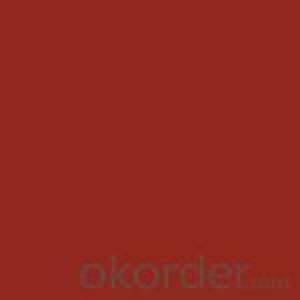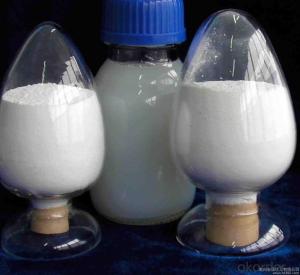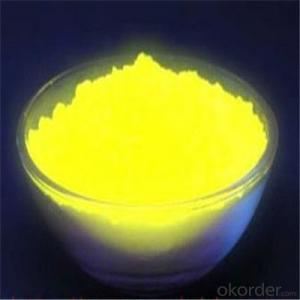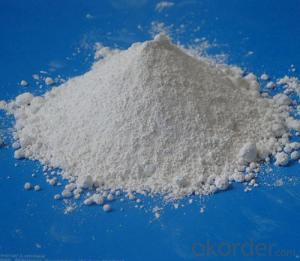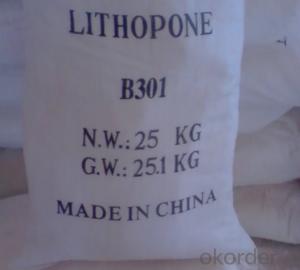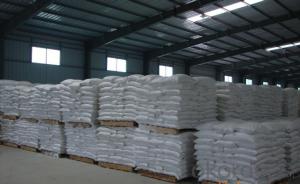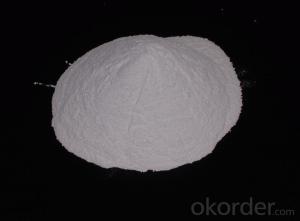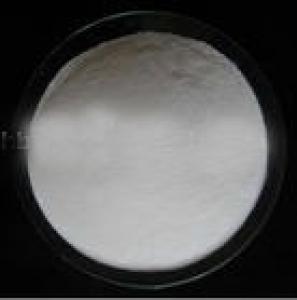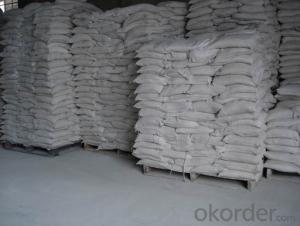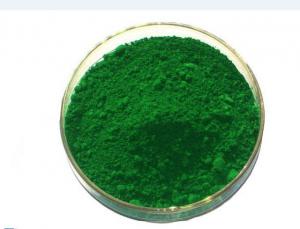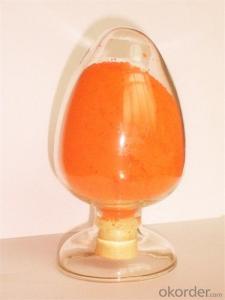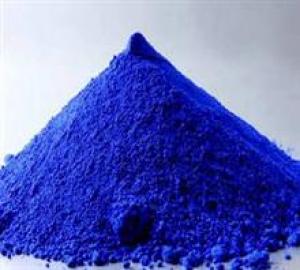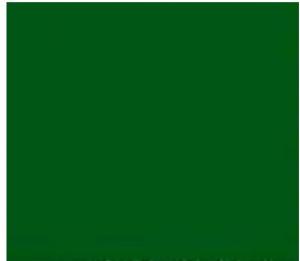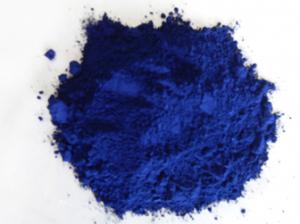White Lithopone ZnS-BaSO4 for paints,printing inks,coating,paper pigment,plastic,leather etc.
- Loading Port:
- Tianjin
- Payment Terms:
- TT OR LC
- Min Order Qty:
- 20 m.t.
- Supply Capability:
- 2000 m.t./month
OKorder Service Pledge
OKorder Financial Service
You Might Also Like
Specifications of Lithopone
Lithopone ZnS-BaSO4
1. zinc: 28-30%,30%
2. Uses:paints,printing inks,coating,paper pigment,plastic
3. ISO,SGS
4. 25kg/bag
Lithopone ZnS-BaSO4 :
1. Commodity:
Lithopone (ZnS-BaSO4) for paint ink plastic paper etc
--------------------------------------------------------------------------------------------------------------
2. Description:
Lithopone B301 is a kind of lithopone whose hiding power is better than that of zinc oxide and worse than that of titanium dioxide.It has good heat-resisitance and is insoluble in water.
White powder, is a mixture of zinc sulfide and barium sulfate. Have high whiteness and good covering power. It is called Inorganic white pigment. Widely used as white pigment of plastics such as polyolefin, vinyl resin, ABS resin, polystyrene, polycarbonate, nylon and polyoxymethylene (POM), also for paint and ink . it is use to colourate for rubber products , linoleum, leather, paper, enamel.
-----------------------------------------------------------------------------------------------------------------
3. Features:
1) A white pigment produced by precipitation through filtering,
heating and quenching works
2) Has mostly been replaced by titanium dioxide which is more
durable, but it is much cheaper
---------------------------------------------------------------------------------------------------------------
4. Application:
Mainly used of coatings, printing ink, rubber, plastic, powder, profiles, paint, paper, and leather, etc.
1) Used as a base for lake pigment
2) Used as a inert pigment for paint, ink and cosmetics
3) A large range of applications in plastic industry
4) Used as a filler in paper, leather, and linoleum
---------------------------------------------------------------------------------------------------------------
5. Packaging:
Packing:25kgs per bag or according customer's requirements.
--------------------------------------------------------------------------------------------------------------
6. Specifications:
| ITEM | SPECIFICATIONS |
Zinc oxide,% | ≤0.60 |
Total zinc(on zinc sulfide basis),% | ≥28 |
Quality standard | GBT1707-95 |
Tinting strength(Relative) | ≥105 |
Total zinc sulfide and barium sulfate | ≥99.0 |
Water soluble % | ≤0.40 |
Oil absorption,g/100g, | ≤14.0 |
Sieve residue 45um % | ≤0.10 |
Volatile at 105°C g/100g | ≤0.30 |
Color | Not lower than standard sample |
| Hiding Power(contrast ratio) | Not lower than 5% of standard sample |
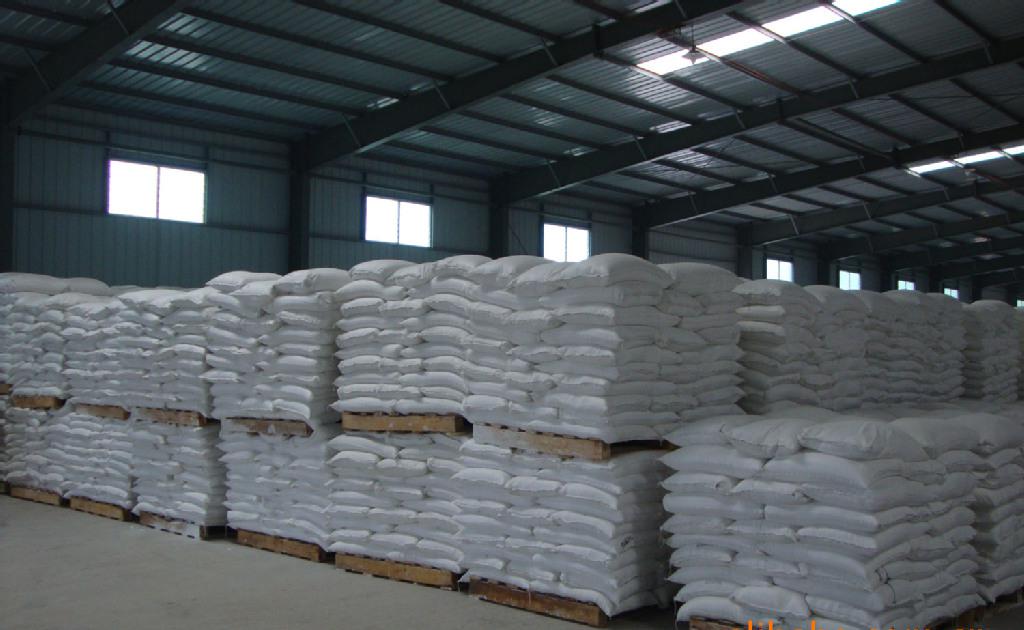
- Q: A.catalyzes chemical reactions.B.absorbs light.C.transports materials.D nverts energy to light.E s energy.
- In biology, a pigment is any colored material of plant or animal cells. Many biological structures, such as skin, eyes, fur and hair contain pigments (such as melanin) in specialized cells called chromatophores. Many conditions affect the levels or nature of pigments in plant, animal, some protista, or fungus cells. For instance, Albinism is a disorder affecting the level of melanin production in animals. Pigment color differs from structural color in that it is the same for all viewing angles, whereas structural color is the result of selective reflection or iridescence, usually because of multilayer structures. For example, butterfly wings typically contain structural color, although many butterflies have cells that contain pigment as well. So pigment reflects color and absorbs light.
- Q: okay so I have always used all the cheap makeup and I am sick of it! I was wondering if mac pigments will give me a lot of color without having to use half of the container. Most eyeshadows look nothing like they are supposed to on me. they are like 100 times lighter. I have seen beautiful things done with the pigments but they look like they could get everywhere really easy. will they give me vibrant color without getting all over?
- *~...Welcome...It Won't Be Long Til U Become A MAC Addict. Hehe. Well Loose Eyeshadows Can Get Very Messy, So I Suggest Using A Primer Or An Eyeshadow Base When You Use The Pigments. The Pigments Will Last Longer And The Color Will Be More Vibrant. =) Trust Me, Once You've Tried MAC You'll Love It.... Also, If You Like The Pigments, May I Recommend Beauty From the Earth...They Have Great Color Selections It's Cheaper.... Enjoy!
- Q: can the pigment know as Chinese purple form a matter wave in certain circumstances?
- Scientists explore atomic mysteries of ancient pigment LOS ALAMOS, N.M., Nov. 18, 2004 -- University of California scientists from the National High Magnetic Field Laboratory, Pulsed Field Facility at Los Alamos National Laboratory, working with colleagues from Tokyo Metropolitan University, the University of Buenos Aires in Argentina, the National Institute of Chemical Physics and Biophysics in Estonia, the National High Magnetic Field Laboratory in Tallahassee, Florida and the University of Tokyo, have discovered an ideal candidate for Bose-Einstein condensation in the ancient Chinese pigment, Han Purple. In research featured recently on the cover of Physical Review Letters, the team describes how the application of a strong magnetic field to Han Purple (BaCuSi2O6) creates a gas of bosonic spin triplet excitations. The field acts as a chemical potential causing the weakly interacting bosonic gas to undergo Bose-Einstein condensation (BEC) when the temperature is reduced to minus 453 degrees Fahrenheit, six orders of magnitude higher than the temperature normally required for BEC in atomic gases.
- Q: I am about to purchase a bunch of MAC pigments and I have noticed that they all look glittery, is this just the kind that i am looking at? I know they are versatile, so that is why i want to buy them. And it seems as though they will last longert than eyeshadow...
- they will last A LOT longer then eye shadows. and if you dont want the pigment to be as shiny i would suggest to mix it with an eyeshadow. i have also noticed they r all very glittery. sorry if this didnt help much Good luck! :)
- Q: Please help me answer these Genetics problems. These are the problems that was assigned in the previous exams, but the professor doesn't provide the answer keys or a review session to go over these.Pigment in the mouse is produced only when the C allele is present. Individuals of the cc genotype have no color. if color is present, it may be determined by the A, a alleles. AA or Aa results in the agouti color, while aa results in the black color. In 3 crosses between agouti females whose genotypes are unknowns and males of the aacc genotype, the following phenotypic ratios were obtained. Female 1: 8 agouti 8 colorlessFemale 2: 4 agouti 5 black 10 colorless
- interior the 1st bypass AACC x aacc, discern a million will produce all AC gametes and discern 2 ac. Your F1 will all be AaCc. As all have the C allele they are going to be pigmented and as they're Aa they're going to all be agouti. Your F1 bypass is AaCc x AaCc. each and each discern can produce 4 gametes AC, Ac, aC, ac. To get all the genotypes you would be able to desire to entice a 4 x 4 Punnett sq.. each and each column and each and each row has between the 4 gametes in it and the cells comprise the blended genotypes. in case you count type up your genotypes you will discover 9 comprise the two A and C, those are agouti, 4 comprise cc, and all of those would be white regardless of the genotype at A, 3 comprise aa and C, those will all be black. So your phenotypic ratio would be 9:4:3 agouti: white: black the subsequent 3 crosses are all attempt crosses - you employ a recessive discern to artwork out the genotype of the different discern. a million. As lots of the offspring are colourless, you be attentive to that the two mothers and dads carry the c allele, as you pick cc for colourless mice. As there are no black mice, there is not any a allele interior the mum, as no aa offspring are produced. The bypass is AACc x aacc. woman gametes are AC or Ac and male gametes are all ac, offspring are the two AaCc or Aacc. 2. Is the opposite of bypass a million. There are black offspring so mom would desire to hold an a allele to furnish black mice, as there are no colourless ones, there is not any c allele interior the mum. you could write down the bypass and the F2 effect now. 3. This time all hues are produced, so the mum would desire to hold the two a and c alleles. Her genotype is AaCc, she would be able to offer 4 gametes as interior the 1st bypass and you will artwork out the resultant genotypes and phenotypes interior the F2.
- Q: How to manufacture FRP pigments?
- Pigment A finely divided material which contributes to optical and other properties of paint, finishes, and coatings. Pigments are insoluble in the coating material, whereas dyes dissolve in and color the coating. Pigments are mechanically mixed with the coating and are deposited when the coating dries. Their physical properties generally are not changed by incorporation in and deposition from the vehicle. Pigments may be classified according to composition (inorganic or organic) or by source (natural or synthetic). However, the most useful classification is by color (white, transparent, or colored) and by function. Special pigments include anticorrosive, metallic, and luminous pigments. See also Dye; Luminous paint; Paint.
- Q: PLEASE TRY!, to awnser ANY of the questions below.~What factors cause leaves to change colors. Where do these colors come from?~What are the names of the specific chemical pigments that cause the colors we see (reds, yellows, purples, browns, greens etc.) These are the same pigments (chemical that causes color) that give fruit their different colors.~What is the process (how it happens) that cause leaves to fall off of the branches. Explain at the cell level. (picture)Please try to awnser. Thanks.
- Chlorophyll leaves and Tannin enters,depends on the temperature and seasons
- Q: i want to get mac melon pigment but i dont know what other eyeshadows to pair and blend it with. im looking for an everyday look. also what brushes to use with pigments?
- With the Melon pigment, I would recommend using warm, chocolate copper, bronze types of colors. It will provide a nice contrast to the melon while giving your eyes some added depth and definition. As far as brushes go, I like using the 252, large shader brush. This brush picks up pigment nicely and it has nice compressed/dense bristles so you can manipulate and lay the pigment down with greater ease. I like the #286 The dual fiber blending brush for pigments as well. It's made of natural fiber and synthetic fiber. This is a great brush because you really get 2 brushes in 1. With this 'blending' brush you can also use it for targeted color deposits and the synthetic fibers won't suck up what you just laid down and you will get a flawless, beautifully blended eyeshadow application.
- Q: the absorption spectrum and the range of light reflected by each
- three major pigments are 1.chlorophyll a 2.chlorophyll b 3.carotenoids chlorophyll a is the major pigment,chlorophyll b n carotenoid are the accessory pigments which help in absorption of the incident light of different wavelengths. another pigment xanthopyll-fucoxanthin is also present in some plants
- Q: Why is it important for a plant to have more pigments than just chlorophyll?
- if the plant has more than one color of pigments, it can absorb more spectrums of the visible scale and create food longer, therefore surviving longer
Send your message to us
White Lithopone ZnS-BaSO4 for paints,printing inks,coating,paper pigment,plastic,leather etc.
- Loading Port:
- Tianjin
- Payment Terms:
- TT OR LC
- Min Order Qty:
- 20 m.t.
- Supply Capability:
- 2000 m.t./month
OKorder Service Pledge
OKorder Financial Service
Similar products
Hot products
Hot Searches
Related keywords
